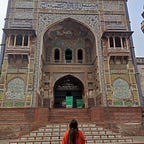The Chronology of Renewable Energy in Pakistan: Past, Present and the Future
Economists often refer to Pakistan as one of the ‘Next Eleven’ developing countries, and soon to become one of the world’s largest economies in the 21st century. Present fastest-growing economies all share one thing in common, and that is the rise of renewable technologies. Although Pakistan has many ways to go before it can properly establish itself as a country running on renewable energy completely; in some ways, it has already existed in our region since the dawn of civilization.
Renewable energy refers to the energy that comes from a natural process or source, which do not replenish over time. This includes solar energy, geothermal, biomass, hydropower and wind energy. The first recorded instance of the usage of renewable resources in the Subcontinent dates all the way back to the Indus Valley Civilization where rainwater harvesting and using solar energy to form sunbaked bricks, was typical of the time.
Perhaps the most interesting use of energy sources was 10,000 years ago, with the settlement of Paleo-Indians near geothermal springs. The Paleo-Indians extracted the heat from the springs in order to form fire and use it for cooking and heating purposes.
With the advancement in technology and the ever-growing demand to sustain oneself, using whatever methods possible; smaller localities in the Subcontinent that were deprived of the grid-based connections and had to rely on alternative methods for cooking and heating, often used cow-dung as a replacement for natural gas.
Pre-partition renewable ‘solutions’ such as the wind installations inspired by the Persian wind-catchers were abundant in Sindh and Punjab. Called ‘Mangh’ or ‘Manha’ in the local language, they were used to combat the dry spells and the scorching heat that is all too common in the plains of Sindh. This could’ve been one of the very first forms of Wind-energy in the country. Of course, the Zorlu Wind Project came much later into existence in 2012 in the Thatta, Sindh.
When Pakistan gained independence in 1947, it inherited only 60 MW generation capacity for its 31.5 million people. For the next 40 years, closing this gap was highly necessary, in order to meet the ever-growing demand for electricity. In the mid-80s the Govt. of Pakistan had installed 18 PV systems in various parts of the country with a composite output of 440 kW. But unluckily, these systems were no longer operational in the 1990s due to a lack of technical know-how about operation and maintenance.
In 2003, another organization, namely Alternate Energy Development Board (AEDB), joined such endeavours. Only then, some real efforts were made in establishing full-blown renewable projects in the country. The first wind power generation plant in Pakistan was inaugurated in December 2012 and it started its full production in 2013.
From then onwards, there have been many renewable projects that have been established all over the country. Companies such as REON, Skyelectric, Clean Power and SGS etc.; have been providing renewable energy services and working on both off-grid and on-grid projects.
Today Pakistan operates on 4% renewable-powered electrical projects. Recently AEDB has announced plans to increase it up to 30% by 2030. If this happens sooner than expected, we could be indeed looking at one of the fastest-growing, the largest and hopefully, a completely renewable economy by 2050.
